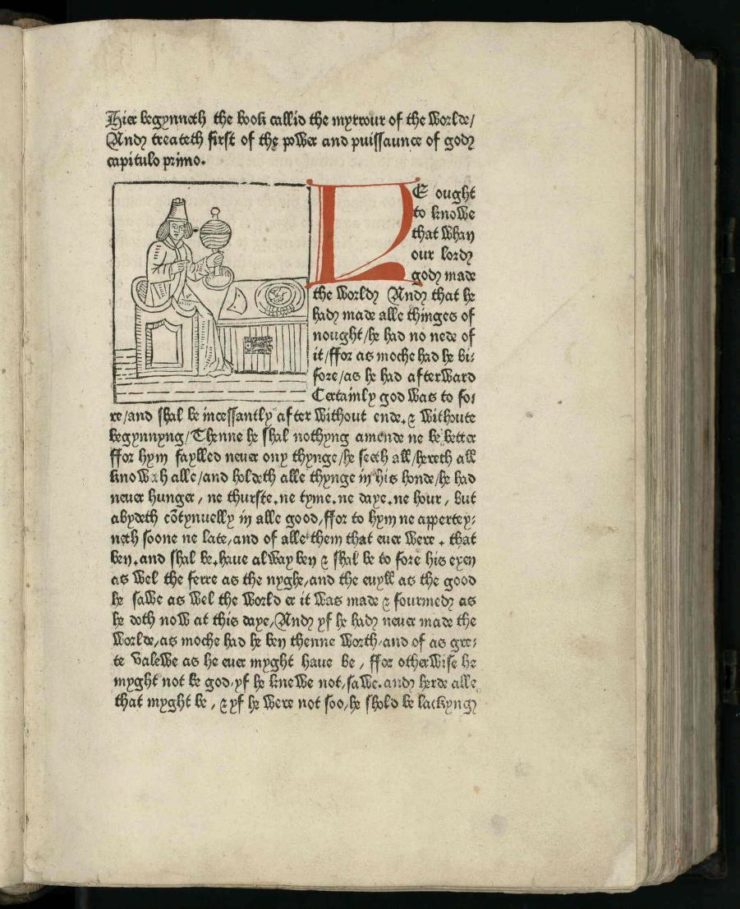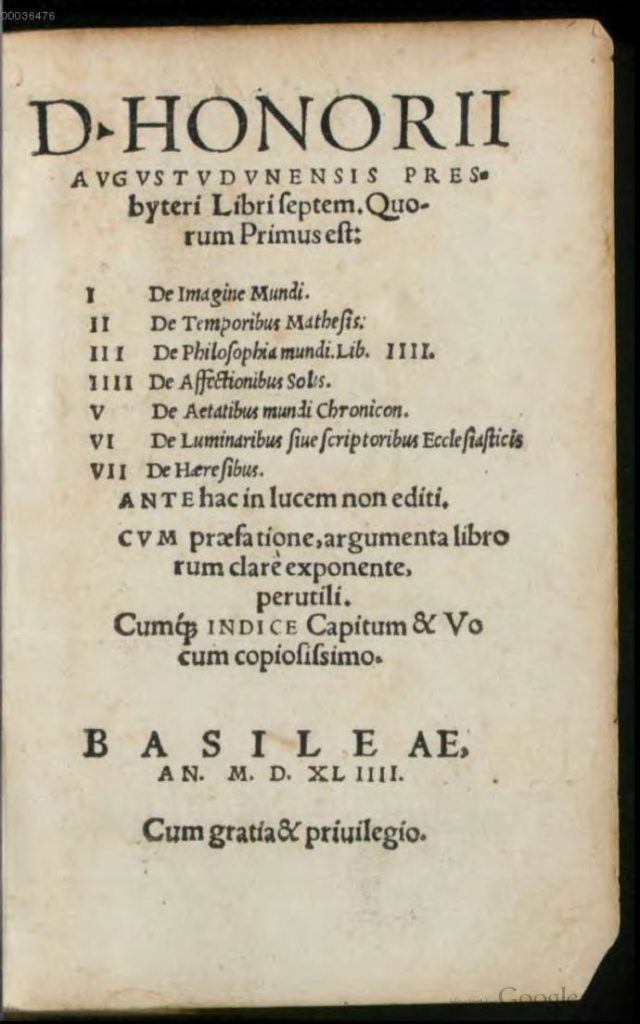Exhibition
INCUNABULA
With the advent of printing in Europe in the mid-fifteenth century, many of the more popular works made their way from manuscript into print. The texts of the Imago mundi family were among them. Many of these early printed books (known as “incunabula’) still survive.
Middle English Mirrour of the World
In 1481, William Caxton produced a Middle English translation of the Image du monde and printed it under the title Mirrour of the World. This book proved so popular, that he produced a second edition around 1490. The image below is taken from the first edition.

A page from the Mirrour of the World by William Caxton (1481). Source: archive.org. Public Domain Mark 1.0 Book digitized by the Library of Congress (Lessing J. Rosenwald Collection).
Later editions
Despite the fact that with the discovery of the Americas in 1492 the view of the world provided by the geographical section of the Imago mundi became outdated, printed editions of this text were nevertheless produced. In some cases, as in the example below from 1544, the text was published within a collection bringing together several works by Honorius (for more on Honorius see our page on early manuscripts of Imago mundi).

D. Honorii Avgvstvdvnensis Presbyteri Libri septem. Quorum Promus est: I. De Imagine Mundi… (Basil, 1544). Source: https://archive.org/details/DHonoriiAugustudunensisLibriSeptem/page/n5 Public Domain Mark 1.0 Digitalised by Google.
A number of libraries have made their printed copies of the Imago mundi available online. To access the full book (external website), click on the image below.
Imago mundi online:
A color scan of the 1583 edition held at the Biblioteca Universitaria Alessandrina in Rome can be accessed here.
Other online resources:
A major collection of English incunabula is Early English Books Oline (EEBO).
The University of Chicago Library website has a highly useful Guide to Early Printed Books (by Katrina Powers). This guide provides an accessible introduction to incunabula and links to further resources authored.
For those interested in the making of early printed books, The Folger Shakespeare Library DIY First Folio provides users with an opportunity to put together their own (virtual) early printed book, as well as information on the processes of printing employed in Shakespeare’s First Folio.
To return to the exhibition entrance page, click here.


